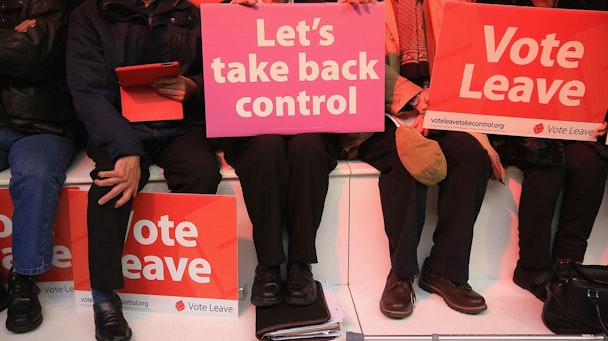'We dumped our entire budget in the last 10 days': inside the behavioural science strategy of Vote Leave
As the one year anniversary of the British public’s vote to leave the European Union approaches, Vote Leave's campaign director has revealed it was his team's razor sharp focus on data, targeting and behavioural science that led to winning the 2016 referendum.

Vote Leave
Dominic Cummings explained at Ogilvy Change’s Nudgestock that because his campaign struggled to get big names or big businesses on board, he looked for an alternative strategy. The idea was to put data science at the heart of Vote Leave's digital operations as part of a constantly iterative process that tested and refined messages to different segments.
Using mass polling and focus groups to figure out the right messages for specific demographics, the team plugged the data they accumulated on the ground and online straight back into social media.
“They ran messages experimentally on Facebook to figure out what things work and don’t work," Cummings said.
"We basically dumped our entire budget in the last 10 days, and really in the last three or four days. We aimed it at roughly 7 million people, who saw something like one and a half billion digital ads over a relatively short period of time."
Early polls conducted by the campaigners suggested public opinion was divided from the start, so the team put resources into targeting those whose vote could be swayed. One third of those surveyed said they disliked the EU and wanted to leave regardless of the consequences, another third felt positively about the EU and wanted to remain, while one fifth of respondents didn’t think the EU was a good thing but were scared of leaving, so would probably opt to remain for fear of change.
“So we had to motivate that third of people who’d actually turn out to vote [Leave], we had to try and demotivate that third who wanted to stay in and we had to try and persuade enough of that fraction of the fifth not to be frightened to vote,” Cummings said.
A key element of the campaign’s messaging was, of course, the ‘Take Back Control’ slogan. “The word ‘back’ triggering loss aversion, the feeling that something has been lost and we can regain what we’ve lost, which I think was interesting," said Cummings.
“It was also about taking back control of the system itself. For a lot of people it was take back control that made them think, 'yeah, these are the guys who screwed up the economy, who drove it off a cliff in 2008, whose mates are all Goldman Sachs bankers with hedge funds on massive bonuses.”
“'We’ll take back control from you lot in London'.”
Adding risk to remain
As well as the £350m per week Vote Leave claimed could be spent on the NHS, another key campaign message was to to make staying "appear riskier" – an approach that was “fundamental psychologically”, Cummings explained. The campaign focused on the idea of "the next wave of recession countries", using as an example the possibility of Turkey's accession to the EU, and the fact that the EU would then have borders with Syria and Iraq.
Cummings used market research conducted early on in the process to ensure he could tap into the UK public’s key concerns through his messages.
“How politicians think, how the media think and how communications professionals think is not necessarily how the public think,” Cummings said. “Essentially I found that people didn’t know more about the EU in 2016 than they did 15 years earlier. However, three things had changed in the world during that time: the first was immigration – the scale of immigration and the fact that the EU was now blamed for immigration problems.
“The other big thing was the financial crisis in 2008,” he continued. “It undermined confidence in government, in Whitehall, in big business, in the banks and also in the European Union.
“The third big factor was the euro.”
Cummings explained that he believed the culmination of these three factors gave the campaign a fighting chance from the get-go, despite the fact that ‘status quo votes’ tended to have a bigger advantage.
Winning formulae
Much like Labour’s recent digital strategy, which focused heavily on targeting effectively with data, Leave won out by looking closely and strategically at the numbers. By coupling data with behavioural science-led insight used to capitalise on genuine public concern, the campaign was able to deliver their message to the people who mattered most to them: those on the fence.
Both campaigns also spent considerable portions of their ad budget in the final crucial days. Labour put some serious spend behind promoting #forthemany on Twitter on polling day, for example, while by contrast Theresa May’s former adviser Nick Timothy has even acknowledged the Conservatives' failure to utilise modern campaigning methods to target specific voters.
Ultimately, we can expect increasingly scientific levels of targeting in political advertising as it appears this approach fundamentally works, but given the levels of media outrage at the rise of so-called ‘dark ads’ from major parties, there’s the possibility we’ll also see a real crackdown from advertising and internet watchdogs.

